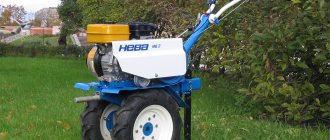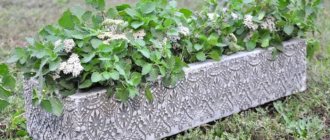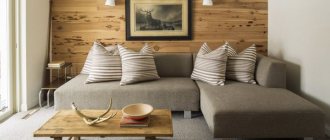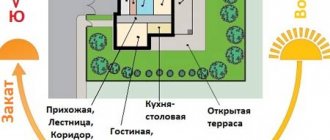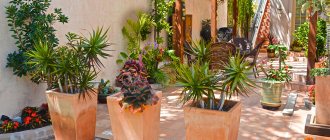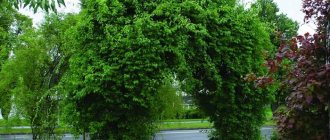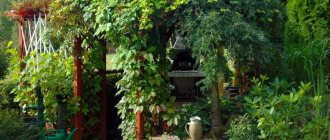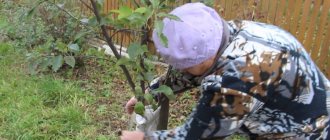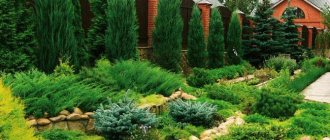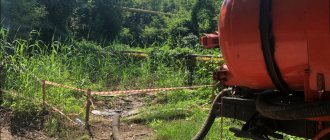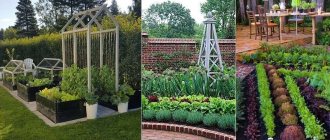The Christmas tree is an invariable attribute of the New Year holidays and people who prefer a living tree are thinking about how to plant a beauty in their garden to decorate it for every New Year. In addition, in this way you will save the life of more than one living Christmas tree and protect yourself from using artificial trees. Many people buy live trees in buckets, which are then transplanted into open ground. However, very often such plants do not take root and die. In our article we will tell you how to choose the right Christmas tree to plant in your garden.
Features of miniature spruce trees
Caring for small spruce trees is quite difficult. If you want to plant such crops on the site, you will need to create certain conditions. It should be noted sensitivity to the amount of sunlight, temperature, humidity and soil quality.
Particular attention should be paid to young plants. If the first signs of diseases or pests appear on them, treatment should be started immediately. Otherwise the tree will die.
In the first few years after planting, the crop needs to be shaded in the summer and covered with warm materials in the winter. With age, immunity is developed, so the trees are more resilient. They no longer need careful care.
Why don’t conifers take root in the country?
Initially, we want to describe the standard causes of disease in conifers in order to establish why some species do not take root in summer cottages.
Unsuitable climate for conifers
Perhaps you want to grow a plant in your dacha that prefers a frosty and dry climate, and your dacha is located in a region where the climate is different. It is quite possible that, on the contrary, the plant prefers humidity and sun, while your dacha is quite cold and drier. Climate problems are the most important, but they are also trying to get around them. Many people achieve this through adaptation, hardening, and proper preparation of seedlings. But it is more correct to immediately choose those plants that can take root in your climate.
Improper soil conditions
Some species of conifers grow and develop on sandstones all their lives, many can be seen in mountainous areas, among stones, but there are also those that prefer standard country soil. These are again adapted species that have been grown for many years within the city or dacha cooperative, receiving watering, bait, crown formation and other living conditions. These are the ones you should keep as a guideline, and also be sure to clarify on what soils your chosen conifer grows. It is quite possible that the dacha land will not suit him. You may have to choose a different species, or maybe try to create artificial conditions.
Poor quality of seedlings
If we assess the situation roughly, then more than half of the summer residents plant plants that they just liked. The second part consists of experienced summer residents or those who deal with plants professionally. But if we talk about the former, then it is quite difficult for them to choose high-quality seedlings, because even the criteria are sometimes unknown. Therefore, crippled conifer seedlings of the wrong varieties end up at dachas, initially infected with certain diseases, or those most susceptible to pests. The result is the same - the plant does not take root and quickly dies.
Improper care of coniferous plants
You can plant a spruce or pine tree in your dacha, but it is unknown how the coniferous plant will behave in a year or two. Therefore, it is necessary to provide the young tree with high-quality care. Increased attention is required during the first 5-7 years, and this is a mandatory requirement. In the future, it will also be impossible to leave the plant to its own devices - feeding, crown formation, and other care will be required.
It is very important to study the type of plant that is purchased and planted, and the requirements for its cultivation. You cannot use general rules, because each type is individual.
Negative internal environment
Each dacha has its own conditions for plants, which are regulated not only by the entire garden and vegetable garden, but also by neighboring dachas. The situation becomes clearer when you pay attention to the state of your farm. For example, you kill pests, but they appear again because neighbors on both sides of the street do not tend to their garden. The same goes for diseases of trees, shrubs and other plants that easily move from one dacha to another. This can also have a negative impact on conifers, which, for the most part, are quite whimsical.
In addition, pets and even children can be negative for young trees. If a seedling is broken by a dog or kids running around a young Christmas tree, it may not survive. You should create positive conditions for the young tree and try to care for new plants comprehensively. Perhaps in this case the result will be even better than you expected.
There are many reasons for poor growth of coniferous plants, but the main ones are listed above. Try to pay attention to every single detail and correct all the shortcomings. Then you will be able to grow a really healthy and beautiful coniferous plant in your dacha. But also think about the fact that choosing the right type, adapted or simply unpretentious, will help make the task easier!
Spruce selection
In the central zone of the country, different varieties of spruce are often found. All of them take root well in garden plots and can be used to create beautiful compositions.
The most common types of spruce trees:
- Little Jam. The bushes grow slowly and do not have a trunk. There is a small depression in the center of the crown. The needles are short and have a light green tint. The maximum height of an adult plant is 50 cm. The crown diameter can reach 1 m.
- Nana. Characterized by light green needles. The height of adult bushes is about 3 m.
- Dwarf. The height of the plants is about 150 cm. The needles are characterized by an unusual shade. The needles are green, with white spots.
No less popular in our country are the species of Canadian low-growing spruce. They are resistant to adverse environmental factors (frost and drought). It is also unpretentious to the composition of the soil.
We recommend reading:
12 of the most beautiful winter-hardy shrubsFlowers for a flower bed blooming all summer until autumn: photo and name
Fern and its types: characteristics, features and propagation tips
The most popular variety is Konika. It is characterized by fluffy needles, which are characterized by a light green tint. Planting can be done not only in the garden, but also on loggias.
Some gardeners prefer to plant crops on flat roofs to add greenery.
Konica's growth rate is slow. 20 years after planting, the height of the crop is 150 cm.
Description of dwarf spruce Nana
Shade-tolerant decorative foliage plants
This group includes many plants. Here are some of them.
Forsythia
This plant has spectacular leaves of a rich lemon color. It can be planted either together with other shrubs or alone. It is frost- and drought-resistant, and also easy to care for.
Euonymus
This shrub grows very quickly and does not require special care. In winter, it also looks quite impressive. Leaves of rich color will certainly add zest and unique charm to your garden.
Mahonia
This evergreen shrub loves moisture. If there is systematic watering, it will become very lush and can even bloom.
Such shade-tolerant shrubs will be a wonderful decoration for any site.
Landing Features
If you follow all the planting technology, you will not have any problems, even if you have no experience in gardening. First, purchase a seedling.
It is better to do this in specialized stores or nurseries. Sale is carried out in pots or containers. Experienced gardeners recommend buying two-year-old plants.
As mentioned earlier, it is better to plant plants in open ground in the spring. The best time is April and May. During this period, the buds are still sleeping, so the survival rate will be better.
Some gardeners prefer to plant in August or September. At this moment, the root system grows better.
Planting a dwarf spruce is carried out according to the following principle:
- A few days before planting, start preparing the hole. Its size should be equal to the dimensions of the root system. Two-year-old seedlings are planted in a hole measuring 60*80 cm. If the plant is larger, the depth should be increased.
- If you plant several dwarf crops at once, maintain a distance of 50-100 cm.
- Place a layer of drainage at the bottom to prevent excess moisture from stagnating. Sprinkle nutritious soil on top. To do this, mix garden soil with compost or fertilizer.
- Lower the seedling into the hole, the roots of which are placed in a lump of earth. Make sure that the root collar is at ground level and does not go deep into the soil. Fill the hole with soil and tamp down slightly. At a distance of 20 cm from the seedling, you need to form an earthen roller. Fill the space inside with sawdust.
- Water the plant. This will prevent air pockets in the soil and also allow the crop to quench its thirst.
- Place a peg nearby and tie a decorative spruce tree to it.
The video describes in detail the features of planting spruce in the ground.
Preparing for winter
Spruce trees are mostly frost-resistant and can withstand the harshest winters with temperatures dropping to -40°C. And yet, young trees must be covered in winter using spruce branches, dead wood, straw and reed mats that retain snow well. Vertically growing varieties should be tied to supports, since lush trees covered with snow can be uprooted in strong gusts of wind.
The soil in the tree trunk circles is well mulched with any available material - this will help retain snow, reduce soil blowing, and prevent exposure and freezing of the roots. During the winter, they try to collect more snow around the perimeter of the crown, which will not only protect the roots and lower branches, but also provide the needles with the missing moisture.
With the first warmth of spring, the snow is gradually removed, providing access to light and fresh air to the crown, then the layer of mulch is also reduced, raking it away from the root collar. Since the end of February, Christmas trees have been protected from spring burns by covering them with special nets, cotton fabric, spruce branches or other lightweight materials at hand.
Caring for miniature conifers
The basis of caring for dwarf spruce trees is watering and pruning branches. In the first 2-3 weeks after planting, watering is carried out on a daily basis.
Water is poured in small portions to avoid stagnation of excess moisture.
After a few weeks, water the spruce every 2-3 days. Pour no more than 5 liters under each bush. Once this period has passed, you can water the plants less frequently.
If the summer is dry, water the spruce once every 7 days. From 7 to 10 liters of water is poured under each trunk.
Every week you need to loosen the soil to a depth of 5 cm. Place a small layer of peat on top - about 5 cm. In the first few years after planting, the spruce needs to be regularly fed using mineral fertilizers. Don't forget to remove branches that have dried out. Afterwards you can cut off the healthy branches.
Dwarf spruce trees tolerate pruning and other crown shaping procedures well. The first haircut is carried out a year after planting. In the future, the procedure is carried out annually with the onset of spring.
You can trim the height of the tree a little if necessary. To do this, the upper shoots are twisted or cut off. This way the nutrients will be better distributed throughout all branches. The strength will be retained for the additional branches, and the tree will be quite fluffy.
You can give the plant any shape. Haircutting is carried out using hand pruners or loppers.
To prevent branches from splitting and wounds from appearing on the surface, choose well-sharpened tools. Then treat the cut areas with a 7% urea solution.
Advantages and disadvantages of using dwarf conifers
Coniferous dwarf plantings are an ideal solution for decorating the landscape outside the window. These crops are leading landscape design trends today and are widely popular among designers due to their many benefits.
- This popularity is explained by:
- high decorative qualities;
- undemanding and easy to care for;
- the ability to harmonize space as part of any composition;
- compact parameters: thanks to its miniature height and width, such a plant will not take up much space on your site. At the same time, low-growing varieties are an exact copy of a full-fledged plant of the coniferous genus, that is, you can plant pine, spruce, and juniper in your garden.
- Possibility of cultivation both in open areas and in pots. If a crop grows in a container, it can be moved freely depending on what landscape requirements are worth emphasizing. Also, the plant can be brought indoors without any problems and decorated instead of a New Year tree;
- resistance to frost and cold;
- environmental friendliness. They are recommended to be planted to purify the air.
- Among the few disadvantages are:
- susceptibility to fungal diseases;
- fragility of branches and shoots, which leads to their damage under the weight of snow, and this directly affects the deterioration of decorative qualities;
- the ability to lose bright color when exposed to direct sunlight;
- low productivity rates when cuttings.
Diseases
Dwarf spruce trees can be affected by some diseases and pests. The needles are the first to be affected. The main diseases of dwarf spruce include:
- Tracheomycosis. This is a fungal infection that attacks the roots of the plant. The needles become red and fall off. Most often, young crops suffer from this disease. It cannot be treated. To prevent neighboring bushes from being affected, you need to dig up the diseased plant and burn it.
- Rust. This is another fungal infection. Orange growths appear on the branches. The needles, which have acquired a yellow tint, begin to fall off. Treatment is carried out using Glycodin or Vectra. Spraying is carried out every week for a month.
- Conifer fungus. As the disease develops, the needles acquire a black tint and are also covered with a whitish coating. Afterwards they fall off. To cure the disease, you need to spray with 3% copper sulfate. Later, treatment with Trichodermin and Alirin-B is carried out. If the disease has severely affected the bush, it should be burned.
Particular attention should be paid to pests that can attack small spruce trees. If a bark beetle appears on a tree, you should burn it.
Application in landscape design
Dwarf spruce trees can be planted in all types of areas. When the season changes, the landscape panorama changes. However, coniferous crops will revive the garden even in winter. Spruce trees with red cones will look beautiful against the backdrop of a lawn, low bushes or flower beds.
Dwarf spruce trees can complement the stakes or paths that exist in the garden. This is a good option for decorating paths, as well as forming alpine slides. It is better to decorate paths with cone-shaped trees.
It is advisable to plant varieties with a lush crown near bodies of water. Some gardeners prefer to plant small spruce trees as hedges. These designs will look beautiful throughout the year. Such hedges will protect the area from the wind and will also help to highlight the area.
For these purposes, it is advisable to use varieties with a pyramidal or spherical crown. Species whose needles are painted blue or steel will look unusual in the garden. The main thing is to use one type so that there is no strong contrast. This will spoil the entire appearance of the site.
If you want to diversify the area and give it life, plant dwarf spruce trees, about 1.5 m high, against the background of the lawn. To add charm to the design, use varieties with a crown in the form of a cone or ball. If the lawn is miniature, a single spruce will look harmonious.
Small bushes will look beautiful in group plantings. When you start forming compositions, try to select seedlings based on the type and shades of needles. It is very important that everything is harmonious.
Plantings with pyramidal, spherical and creeping varieties will look picturesque. To add some color, you can form flower beds nearby. Hydrangea bushes will look very unusual against the background of needles.
Mixborders are no less popular. Their essence lies in the fact that compositional ensembles consist of different representatives of the flora. Coniferous crops should occupy a central place. They will look beautiful in a prefabricated flower bed or as a backdrop for flowers.
It is best to plant blue spruce and barberry nearby. You can complement the composition with hydrangea or dogwood.
When you create a mixborder, consider how compatible the plants are with each other. If the needles fall off, the acidity of the soil will increase. This is not suitable for all types of plants.
Dwarf spruces would be appropriate in rock gardens. Rocky gardens, which are now in fashion, will look very harmonious in combination with coniferous crops. When choosing, be guided by the size of the rockery. Dwarf or creeping varieties are appropriate only in small rockeries.
Bonsai and potted gardens are especially popular today. This is the best option for regions with an average climate. After all, this does not allow planting some varieties of dwarf spruce trees in open ground.
Bushes intended for planting in the southern regions do not respond well to temperature changes. This may negatively affect their condition.
It is better to plant these species in flower pots or containers. In summer they should be stored in the garden, and in winter they should be brought to a cool veranda. The larger the size of the tree and crown, the larger the pot should be selected. The main advantage of planting in a container is that you can periodically change the arrangement of compositions.
Now you know what features characterize dwarf spruce. It is very important to provide her with proper care, as well as adhere to the basic planting rules. When choosing varieties, take into account the features of the planned landscape design.
Popular varieties
Conifers, which are used to decorate not only public parks, but also private lands, number dozens of species and hundreds of varieties. But more often than others, large spruce trees are planted, which are chosen both because of their decorative value and because of their unpretentiousness - if basic rules are followed, they readily take root in almost any conditions. Large-sized trees are understood to be trees at different stages of development, both fully formed and still growing. Knowing the variety, you can choose a tree suitable for specific conditions that will delight you for decades. Let's consider the main types used in landscaping suburban areas, so that in the future planting and caring for spruce does not cause unnecessary problems.
Norway spruce – it is also called common spruce, but we are not talking about the species. The main variety is capable of growing up to thirty meters in height, and forming a crown with a diameter of up to five meters. Such dimensions are not for every park, not to mention country houses of six to ten acres. Therefore, in the private segment, dwarf varieties of this species are usually cultivated, planted along the perimeter of the fence or instead of it in the arrangement of hedges. When you need a solid composition for a large area, a medium-sized variety and planting large-sized varieties up to six to eight meters high are suitable. Among the most popular are several varieties of common spruce:
- "Echinaformis."
- "To Columnaris."
- "Compact".
- "Nane."
Blue spruce is also prickly, and both definitions are true. The crown is pyramidal in appearance, with a characteristic shade and an abundant mass of short, prickly needles. In parks there are giants that are even twenty-five meters tall, but in suburban areas people are thinking about how to plant a shorter spruce. Regardless of size, blue spruce trees tolerate both frost and heat equally well, and mainly four varieties are planted:
- "Clan-Brasilianne";
- Glauca;
- Iseli Fastigiata;
- Hoopsy.
Serbian spruce - otherwise, Balkan, initially also a tall species, reaching three tens of meters, but to expand the scope of application. The plant has an original appearance, thanks to its long shoots, it seems that an elegant fringe is hanging from the branches. The tree can be planted in shaded areas of the site, as it normally tolerates the lack of direct sunlight. Several varieties of Balkan spruce are cultivated in summer cottages:
- Pendula Globe.
- Grom.
- KareI.
Siberian spruce - a pyramidal crown attracts the attention of many gardeners, as does planting large spruce trees, but the tree feels best in cold regions, since it tolerates severe frosts better than summer heat. All varieties have a rich, dark green color, the needles are hard, the length of the needles is no more than 2-3 cm. Hybrid varieties may have needles with a slight bluish tint or a blue bias. The shape of the top is always cone-shaped. Varieties:
- Pechora.
- Siberian blue.
The choice of variety is largely determined by the assortment of nurseries, since when ordering planting material from afar, the price for landscaping the site increases significantly.
